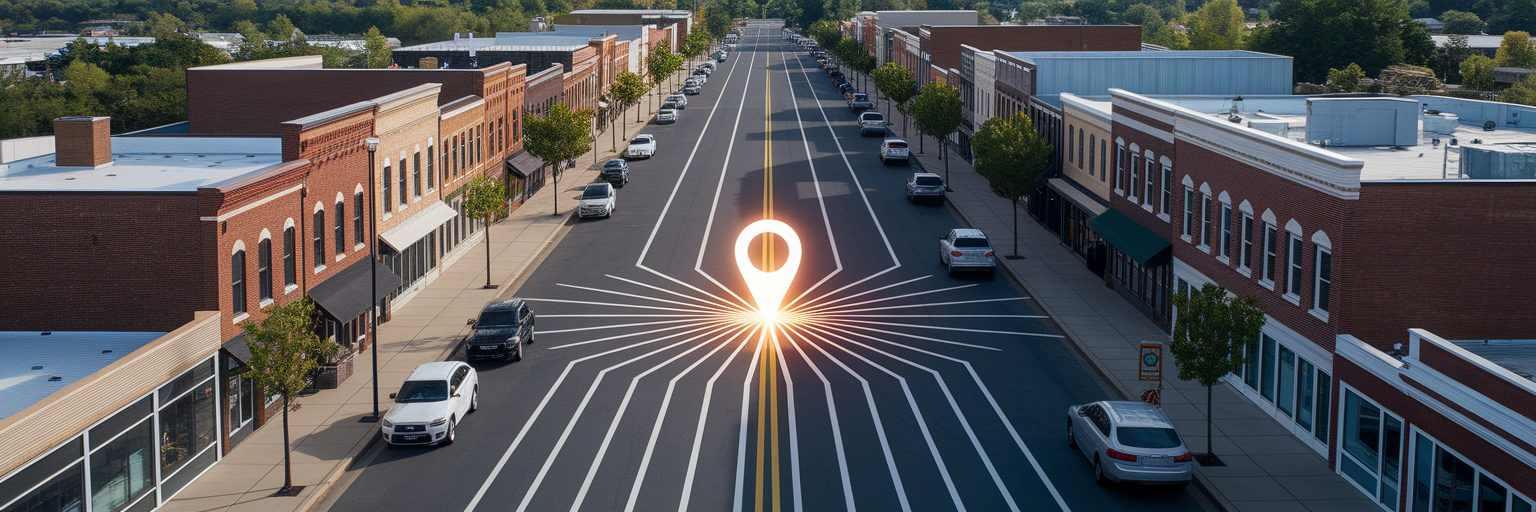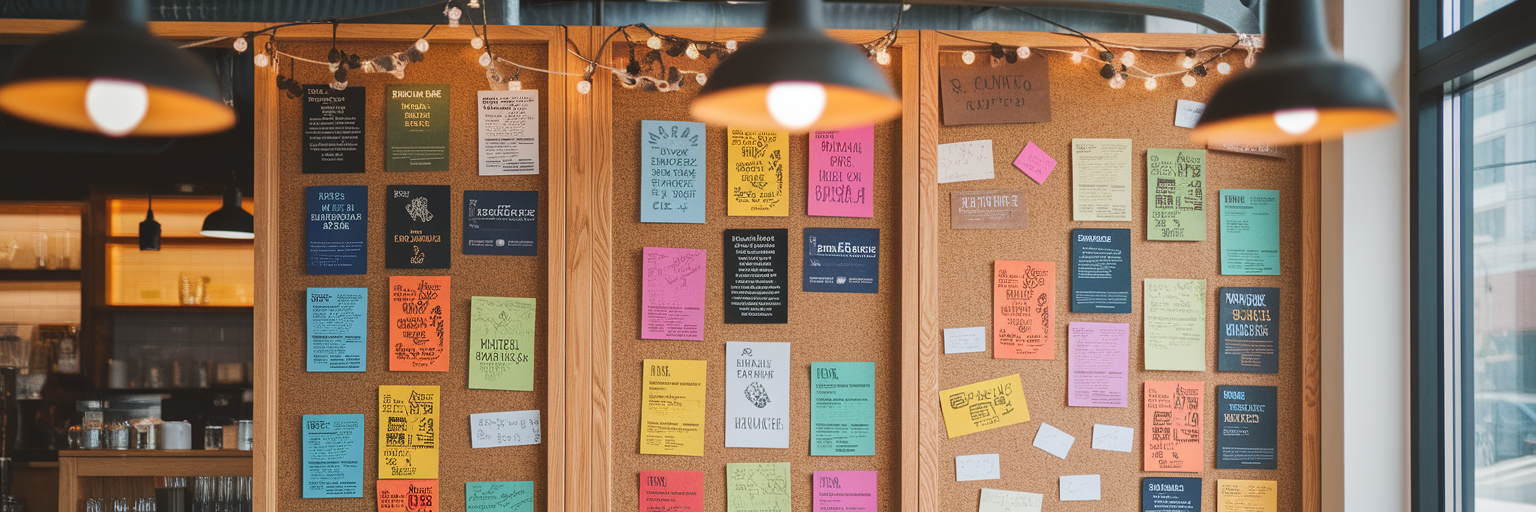How Local Engagement Can Put Your Blog on the Map
Learn how to boost your blog's local visibility and attract nearby customers. This guide covers practical steps for community engagement, content, and reviews.

Nearly half of all Google searches are from people seeking local information. This simple fact highlights a massive opportunity. While many businesses focus on broad digital strategies, the real connections are often made right in your own neighborhood. This is where a focused approach can make all the difference, turning your blog from a simple website feature into a powerful tool for local growth.
What Is Local Engagement Optimization?
You might be familiar with search engine optimization, but what about its hyper-local counterpart? Local engagement optimization is a strategy that moves beyond just ranking for keywords. Its goal is to establish your business as a trusted, authoritative voice within a specific geographic community. Instead of just trying to attract any visitor, you are focused on connecting with people who are physically nearby and more likely to become loyal customers.
Think of it this way: traditional SEO helps you get found by anyone, anywhere. LEO helps you get found by the people who can actually walk through your door or use your service in their city. For a small business, this distinction is everything. It’s not about casting the widest net possible. It’s about building genuine relationships with the community you serve, creating content and connections that resonate on a personal level. This approach transforms your blog into a valuable local resource, not just another business website.
Building Your Local Digital Foundation

Before you can connect with your community, you need to make sure they can find you. Your digital foundation starts with your Google Business Profile. Consider it your digital storefront. It’s often the very first interaction a potential customer has with your brand. That’s why providing clear and useful Google Business Profile tips is so important. Start by uploading high-quality photos of your actual location, team, or services in action. Write detailed descriptions of what you offer and, most importantly, ensure your business hours are always accurate.
Next, focus on consistency. Your business Name, Address, and Phone Number (NAP) should be identical everywhere it appears online. Think of it like a background check for your business. If the information is consistent across different platforms, search engines see you as more credible and trustworthy. As highlighted by Google Business Profile Help, maintaining accurate information is a key factor in how you appear in local search results. This consistency builds a strong signal of reliability.
Finally, seek out local citation opportunities. These are mentions of your business on other websites. While platforms like Yelp are a great start, look deeper. Getting listed on your local Chamber of Commerce site, a neighborhood blog, or an industry-specific directory sends powerful signals of local relevance. For example, a local contractor would benefit from being featured on sites relevant to their trade, much like the strategies we outline in our guide for real estate professionals. Building these foundational elements ensures your business is visible and trusted from the start.
| Source Type | Examples | Why It Matters for LEO |
|---|---|---|
| Major Data Aggregators | Data Axle, Foursquare | Distributes your business info widely across many apps and directories. |
| Primary Local Directories | Yelp, Google Maps, Apple Maps | These are the first places customers look for local services. |
| Industry-Specific Sites | Houzz (for home improvement), Zomato (for restaurants) | Signals expertise and relevance within your specific niche. |
| Local Community Hubs | Chamber of Commerce, local news sites, neighborhood blogs | Builds strong geographic authority and community trust. |
Creating Content That Connects with Your Community
With your digital foundation in place, it’s time to create content that speaks directly to your neighbors. This is your chance to showcase your local expertise and build a loyal following. Generic articles won't cut it. Your content needs to feel like it was written specifically for the people in your city. The best local content ideas for blogs are often rooted in shared community experiences.
Instead of guessing what might work, start with proven formats that deliver immediate value to a local audience. Here are a few ideas to get you started:
- Neighborhood Guides: Create a definitive guide to your part of town. Highlight other local businesses, parks, or hidden gems. You become a helpful resource while strengthening community ties.
- Interviews with Local Figures: Sit down with another local entrepreneur, a community leader, or even a long-time customer. Their stories add a human element and cross-promote both of your brands.
- Local Event Recaps: Did you participate in a local farmers market, a charity run, or a street fair? Write about the experience, share photos, and tag other participants. This shows you are an active part of the community.
- Problem-Solving Articles: Address a challenge unique to your area. A roofer in Miami might write about hurricane-proofing, while a coffee shop in Seattle could list the best rainy-day study spots.
As you write, naturally weave in local identifiers like street names, landmarks, or even regional slang. This signals to both readers and search engines that your content is authentically local. If you’re a digital-first business without a physical storefront, you can focus on local market trends or create case studies featuring clients from the area. If you ever feel stuck, remember that you can always find hundreds of localized topic ideas tailored to your specific business and location.
Actively Participating in Your Local Ecosystem

Creating great content is only half the battle. The other half is actively participating in the community you serve. This means stepping out from behind your own blog and engaging where your customers already are. Think of it as being a good neighbor online. This proactive approach to community engagement for small business builds relationships that translate directly into digital visibility.
Start by joining local online spaces. Platforms like Nextdoor or city-specific Facebook groups are hubs of local conversation. Your goal here is not to sell, but to help. Answer questions, offer advice related to your expertise, and become a familiar, trusted voice. When you provide genuine value without asking for anything in return, people will naturally become curious about your business.
Don't forget the power of offline connections. Sponsoring a local youth sports team, hosting a small workshop, or collaborating on an event with a neighboring shop all create powerful online ripples. These activities generate social media mentions, photos, and even backlinks from local news sites or partner websites. To amplify these connections, you can:
- Tag other local businesses in your social media posts to foster goodwill and expand your reach.
- Share community news and events, positioning your brand as a central information hub.
- Run a joint promotion with a complementary business and promote it across both of your channels.
This consistent activity shows that you are invested in the community's success, not just your own. For more inspiration on maintaining a steady stream of relevant content, you can always explore the articles on our main blog.
Leveraging Reviews and Building Trust
In the local marketplace, trust is your most valuable currency. Nothing builds it faster than a steady stream of authentic customer reviews. These reviews are more than just testimonials. They are a powerful ranking signal that tells search engines your business is active, valued, and legitimate. Your goal should be to gather recent, positive feedback consistently.
The key is to make leaving a review as effortless as possible for your happy customers. You don't need aggressive tactics. A simple, polite request in a follow-up email often works wonders. You could also place a small sign or a QR code at your point of sale that links directly to your review page. Removing friction is crucial.
Just as important as getting reviews is responding to them, and that means all of them. A thoughtful reply to a positive review strengthens a customer relationship. More importantly, a professional and empathetic response to a negative review can turn a poor experience around. It shows prospective customers that you are accountable and committed to satisfaction. In fact, a study from BrightLocal shows that businesses that actively respond to reviews tend to earn higher ratings overall, which directly impacts customer trust and local search performance.
A Long-Term Approach to Local Growth
Building a strong local presence is a continuous process, not a one-time project. The strategies you implement today will lay the groundwork for sustainable growth tomorrow. Instead of looking for quick wins, focus on consistent effort. This is truly how to improve local rankings for the long haul.
Pay close attention to your Google Business Profile Insights. Metrics like how many people called your business, requested directions, or clicked through to your website are direct indicators of local interest. These numbers tell you what's working and where you can improve.
Ultimately, your success comes down to becoming an indispensable part of your community. Every piece of content you create, every review you respond to, and every local connection you make strengthens your position. For many solo founders and small teams, maintaining this consistency can be a challenge. That's where an automated engine can manage the entire process, freeing you to do what you do best: run your business.